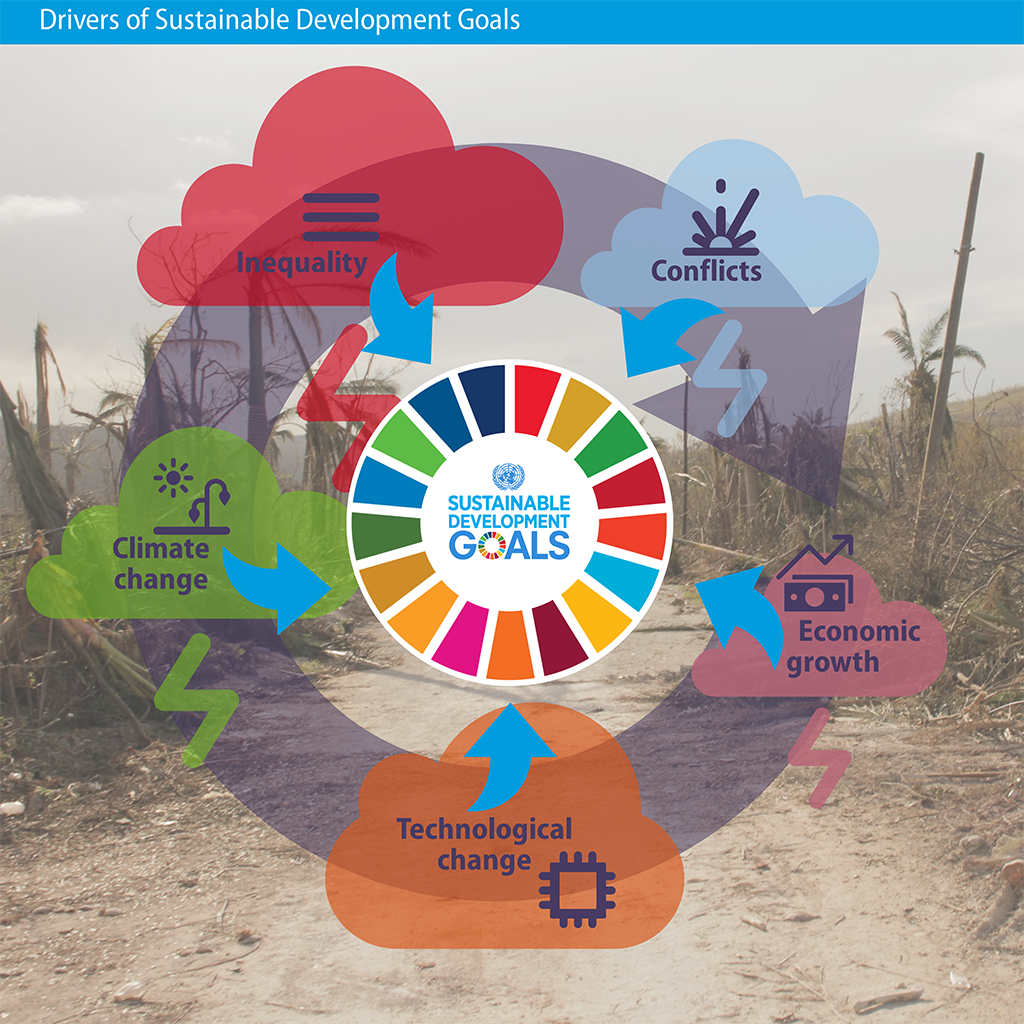
Sustainable Development Outlook 2019: Gathering storms and silver linings
An overview of SDG challenges
Sustainable Development Goals facing strong headwinds
The Sustainable Development Goals (SDGs) have registered some progress since their adoption in 2015. Thanks to concerted efforts of many Governments and development partners, child mortality continues to fall. Hepatitis is on the retreat, while new chronic hepatitis B virus infections is nearly zero. Access to electricity has increased globally and the proportion of urban population living in slums is declining.
Notwithstanding this progress, gathering storms of weakening global economic growth, rising income inequality, unabated global warming and climate change, and escalating conflict are impeding SDG implementation. The tailwinds of rapid technological advances, on the other hand, offer best hope for accelerating SDG progress.
This overview focuses on these key challenges and the policy responses that can address them. It identifies the interlinkages among these challenges, underscoring the imperative of addressing them in a concerted manner, rather than as free-standing issues that can be resolved sequentially and in isolation. The challenges highlighted here are, of course, not the only impediments to achievement of the SDGs; they also risk changing the overall context for sustainable development and, because they cut across all the SDGs and affect all countries, they can potentially undermine the overall implementation of the 2030 Agenda for Sustainable Development.
Slowing growth
Amid rising inequality and uncertainty, global growth will most likely average 3 per cent during the SDG period (2015–2030)—falling below the global growth rate achieved during the Millennium Development Goals (MDG) period (2000–2015), despite a global financial crisis that wreaked havoc on the world economy in 2008–2009. A noticeable decline in global trade—driven by trade disputes, conflicts and technological change—and excessive debt accumulation will remain a drag on global growth and exacerbate the risks of an economic crisis. An economic crisis, whether global or regional, remains a real possibility, which may further trim the growth and employment outlook and derail SDG progress. With policy interest rates at historic lows and fiscal space already constrained in many countries, the world economy is less prepared today than in 2008 to confront a major financial crisis.
Looking beyond growth
While economic growth is necessary, it alone will not deliver the SDGs. Growth in gross domestic product (GDP) is an incomplete measure of economic performance and well-being. Yet, the pursuit of higher GDP growth continues to shape policy considerations, even when it comes at high social and environmental costs.
Creating adequate number of decent jobs that offer living wages and benefits will remain central to achieving the SDGs, as it will enable households to reduce food, shelter, health and energy insecurities and ensure that no one is left behind.
The slowdown in global trade will dampen employment growth, making it increasingly difficult to absorb the growing number of young people entering the labour market. The world will need to create 600 million new jobs—more than 200 million in sub-Saharan Africa alone—between now and 2030 just to maintain the current rate of unemployment. Nearly 1.8 billion people, or one in three adults, will face chronic employment risks, including unemployment, vulnerable employment or leave the work force altogether. Rapid technological change will further complicate the employment outlook for many countries.
Progress in creating decent jobs, reducing economic insecurity and inequality, managing and mitigating climate risks, and preventing violence and conflicts must form the basis for measuring economic performance and accelerating SDG progress.
Taming inequality—an urgent imperative
Rising inequality of income, wealth and access to opportunities discourage skills accumulation, choke economic and social mobility and human development and, consequently, depress economic growth. Inequality also entrenches uncertainty, vulnerability and insecurity, undermines trust in institutions and government, increases social discord and tensions and could possibly trigger violence and conflicts (figure 3). More than two thirds of the world population are now experiencing rising income and wealth inequality, which is significantly undermining the prospects for SDG achievement.
Inequality and employment vulnerability are mutually reinforcing. Highly unequal societies tend to have larger shares of vulnerable employment (figure 5). Inequality also affects households’ ability to cope with economic shocks, making them more vulnerable to future downturns and crises. Despite new data showing the steady rise in income and wealth inequality, there is as yet little evidence of concerted policy efforts to address the problem at national levels. Leaving no one behind—the overarching principle of the SDGs—will remain beyond reach unless societies make a deliberate choice to turn inequality on its head. As inequality manifests in wealth, income, access and outcomes, societies must address inequalities in one or all these dimensions, taking into account country-specific factors and constraints (figure 6). Expanding skills and educational opportunities, creating decent and secure jobs that pay living wages and strengthening social protection systems will remain paramount for taming inequality in all its forms and manifestations.
Regular and orderly migration and resettlement can also play a critical role in reducing inequality, while preventing conflicts and facilitating adaptation to climate change.
Addressing inequality will require a new, win-win approach to redistribution of income, wealth and opportunities. Redistribution need not be considered only as meaning less for people at the top of the income distribution. It can mean more for everyone: more peace and stability for people at the top, more economic security and opportunities for those at the bottom, and more climate resilience and sustainable development for all. Societies must redefine redistribution as a positive sum game in order to bring inequality to the front and centre of efforts to achieve the SDGs.
Climate change: a ticking time bomb
Human activities are generating 42 billion tons of carbon dioxide (CO2) emissions every year, accelerating global warming and climate change—the most ominous threat to the SDGs. After slowing down during 2012–2014 and remaining flat during 2015–2016, global CO2 emissions have started to increase again.
Curbing CO2 emissions will remain a daunting challenge, given the persistently high levels of inequality in per capita emissions levels between high- and low-income countries. Average per capita emissions in high-income countries is 43 times higher than emissions per capita in low-income countries, dwarfing the level of income inequality. As people in developing countries achieve greater economic prosperity, their per capita emissions will rise. New pathways to development and prosperity must leverage technology—especially renewable energy technologies—to decarbonize economic growth.
Stopping this ticking time bomb, which means cutting emissions by 45 per cent from their 2010 levels by 2030, will require drastic measures and dramatic changes in production and consumption patterns. The world needs to quickly move from this current level of emissions to net zero emissions, and then to net negative emissions to minimize climate risks and accelerate SDG progress (figure 8).
Climate risks most pronounced for developing countries
Developing countries—particularly small island developing States and the least developed countries that are least able to cope—are more vulnerable to climate risks. The human cost and economic damages as a share of GDP are significantly higher in developing countries than in the developed world, despite their relatively small contribution to global CO2 emissions.
Curbing inequality is a must for ambitious climate action
Urgent climate action—accelerating mitigation and adaptation efforts and transitioning to low-carbon production and consumption patterns—must form the cornerstone of all SDG efforts, alongside improving resource efficiency and creating millions of decent jobs in the new green economy. Yet, climate action is faltering, despite growing evidence that inaction or delayed action will be too costly for humanity.
The “developed/developing country” divide that impeded global progress on climate action is now reinforced by the growing “rich/poor” divide in the developed economies, challenging and preventing ambitious climate action. In fact, the working poor in developed countries increasingly view global warming and climate change as elitist, urban concerns. The recent Yellow Vest movement in France is an early warning on further paralysis in climate action and absent significant reversal in inequality and improvement in the condition of the most vulnerable population groups in both developed and developing economies. A continued push for climate action—without addressing the concerns of the most vulnerable—will further inflame populism and reinforce opposition to climate action.
Violent conflicts derailing SDG achievement
Violent conflicts, especially those within countries, are on the rise (figure 10) and challenge SDG progress. The intensity of violent conflicts (i.e., number of battle-related deaths) has risen since 2012, with the Middle East alone accounting for more than 50 per cent of total fatalities (figure 11). These conflicts are often the result of entrenched intragroup inequalities and livelihood insecurities due to economic slowdowns, climate-related disasters, forced displacement, epidemic outbreaks, ill-designed policies and capricious behaviour of authoritarian regimes.
Conflicts often reverse decades of hard-won development gains. They also destroy political institutions and social norms, and erode trust and cooperation across ethnic, religious and other dividing lines, sowing the seeds for perpetual conflict. Ethnic nationalistic and religious groups have taken advantage of people’s grievances and the inadequate government responses to them, to radicalize and recruit a significant number of new members both nationally and internationally.
Climate change and conflicts are increasingly and inextricably linked. Droughts and loss of livelihood induced by climate change will amplify economic insecurity, increase migration pressures and potentially trigger violence and conflicts, while conflicts will in turn accelerate deforestation and environmental degradation, and undermine the political and administrative capacities to cope with climate change. Reducing inequality, expanding economic opportunities and securing livelihoods—especially for the most vulnerable and marginalized population groups—must remain a priority for preventing conflicts and accelerating SDG progress in many developing countries, particularly in sub-Saharan Africa.
Harnessing the potentials of migration
Migration pressures have become stronger than ever in an age of growing economic inequality, persistent conflicts, rising climate risks and high population growth in the developing world, especially in sub-Saharan Africa and South Asia. Safe, orderly and regular migration, both within and across countries, remains an important option not only for escaping poverty and conflicts but also for facilitating climate change adaptation. Yet, regular migration opportunities are increasingly limited for would-be migrants, as political power in a large number of destination countries has decisively shifted towards the right, which typically opposes migration. The perceived fear of migrants taking over jobs, burdening the national economy and spreading their cultural and religious practices in the host country is propelling right-wing populism and nativism, making immigrants unwelcome even when the benefits of migration outweigh the costs. The populist backlash against immigration is also undermining international commitment to, and governance of, safe, regular and orderly migration (box 4) and giving rise to a vicious cycle.
Against this backdrop, many developing countries with limited economic means are increasingly hosting large numbers of migrants and refugees. Jordan, Lebanon and Turkey are home to many Syrian refugees, while Bangladesh has taken over a million Rohingya refugees from Myanmar. In Africa, Uganda has sheltered the largest number of refugees on the continent. In Latin America, Colombia, Peru and Brazil are hosting many displaced people from the Bolivarian Republic of Venezuela.
Harnessing the positive potential of migration, for both receiving and sending countries, will remain critical for SDG implementation. In addition to the humanitarian grounds for accepting refugees, ageing and declining populations in many developed countries make it an economic necessity to accept and welcome migrant workers from developing countries with a large young population facing limited economic prospects. A better and wider understanding of the benefits of migration can help counteract populist responses to immigration and promote orderly migration. More effective multilateral cooperation will remain critical for leveraging the potential of migration to deliver various SDGs, including those addressing climate change and reducing inequality.
Technology: the best hope for the SDGs
Technological advances present the best hope for addressing mitigation of CO2 emissions, improving food and energy security, and accelerating progress on other SDGs. Technology is also a wild card, as it may exacerbate employment risks, increase insecurity and inequality and undermine social cohesion, peace and stability. SDG outcomes will largely depend on policies and incentives that will ensure responsible and equitable deployment of new technology.
The world must leverage and make the best use of technological innovations to meet the most urgent and basic needs of hunger, shelter, health and energy. These basic-needs SDGs are critical determinants for meeting other SDGs. Fulfilling the basic needs of humanity, including those of the most vulnerable people, will remain a necessary precondition for achieving the SDGs in their entirety.
People in developing countries spend as much as 80 per cent of their total income to meet their basic needs. Technologies can drastically reduce costs and expand access in the areas of food, housing, health care and energy. Technologies deployed for meeting these basic needs can be a key enabler in reducing vulnerability and inequality.
Securing decent housing for all
One in five people in the world lives in inadequate housing, with nearly one billion still living in slums and informal settlements. Millions of displaced people are trapped in inadequate and often dangerous dwellings, putting their lives, dignity and futures at risk for an extended period. Technological innovations are offering cost-effective emergency shelters as well as longer-term solutions. They also allow a smoother transition to permanent housing and recovery opportunities for the displaced population. Prefabricated housing and new construction materials not only carry the promise of providing adequate and affordable housing for displaced populations, but also may solve the global housing crisis and build resilience against economic and natural disasters.
Satellite technologies revolutionizing agriculture
The number of malnourished people reached 821 million in 2017. Without substantial progress in boosting agricultural productivity and improving affordability, the number will continue to rise. Early warning and mitigation technologies for drought—especially in sub-Saharan Africa where droughts undermine the food security of subsistence farmers—can boost agricultural productivity and help eradicate hunger.
Satellites are already delivering promising results. The Famine Early Warning Systems Network, a network of satellite, ground measurements and data amalgamation algorithms, is providing information on climatic and agricultural market developments for 30 countries across Africa, Asia and Latin America. A system of different technologies working together is critical for a well-functioning satellite-drought initiative.
Satellite technologies are also enabling farmers to respond to drought conditions. An initiative in Ethiopia involves satellite remote sensing to identify groundwater sources, with information relayed to communities and pastoralists in drought-affected areas, assisting them in digging more accurate boreholes. This has led to a 92 per cent success rate in drilling new water sources, reducing cost and improving accessibility.
Energy security within reach
Sustainable energy production and access is a catalyst for achieving many other SDGs. A number of developing countries have made large strides in improving access to electricity since 2000. Yet, 840 million people still lack access to electricity, and nearly 3 billion rely on inefficient and polluting cooking systems responsible for 2.6 million premature deaths due to indoor air pollution. Heavy dependence on fossil fuels perpetuates energy insecurity for millions of people worldwide and contributes to devastating global warming.
Decentralized, off-grid renewable energy systems that use solar photovoltaic, wind turbines, mini-scale hydropower generators or biomass present tremendous hope for increasing access to electricity while reducing emissions and global warming. New technologies are reducing the cost of renewables and making decentralized solutions viable options, along with the expansion of conventional grid connections. The significant uptake of renewable energy usage and reduction in the use of fossil fuels—as envisaged in the sustainable development scenario—is paving the way for decoupling of economic growth and carbon emissions, making it possible to maintain the same growth rates with greatly reduced CO2 emissions.
Mobile technology and access to health care
Despite tremendous progress in medical science, at least half of the global population, especially the poor and marginalized, still lack access to essential health services. Mobile health services that make health information and basic health services accessible from mobile devices promise to drastically expand coverage and transform health outcomes for billions of people. But leveraging mobile technologies to promote universal health care will require significant improvements in Internet infrastructure.
Mobile connectivity is also helping to alleviate the global shortfall of health workers—estimated to be as large as 10 million—especially in remote locations. It is now possible for medical personnel anywhere in the world to remotely review radiological images, diagnose skin conditions, review pathological results, provide mental health services and monitor patients.
The combination of connected devices and the growing recognition of the role of digital technologies will substantially change how Governments manage their health systems. Fifty-eight per cent of the 125 countries that participated in the latest survey by the World Health Organization report having national strategies to use digital technology for health (eHealth) in 2016.
Technology-induced cost reductions will not necessarily mean that more people will automatically gain access to affordable housing, clean renewable energy or health care. Technological innovation must be managed and regulated, keeping in mind the most vulnerable who are least able to pay for their basic needs. The efficiency gains and cost reduction must translate to affordability and improved access for those who are most likely to be left behind. Technologies will foster SDG achievements only if they are handled with caution.

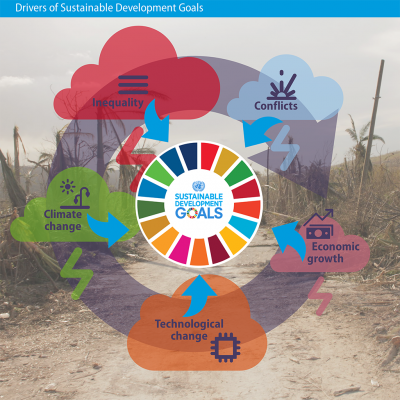
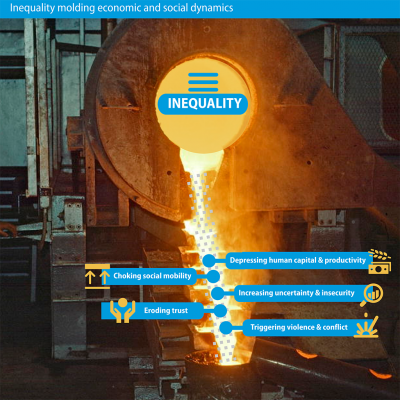
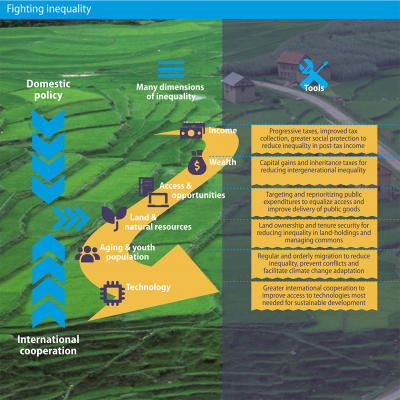
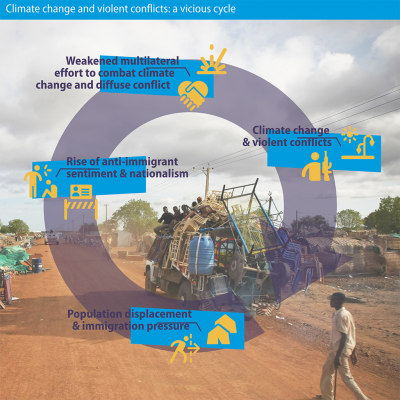
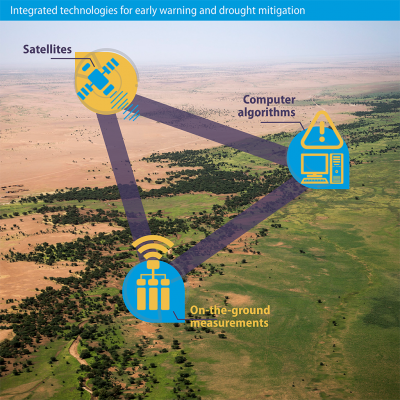
Follow Us